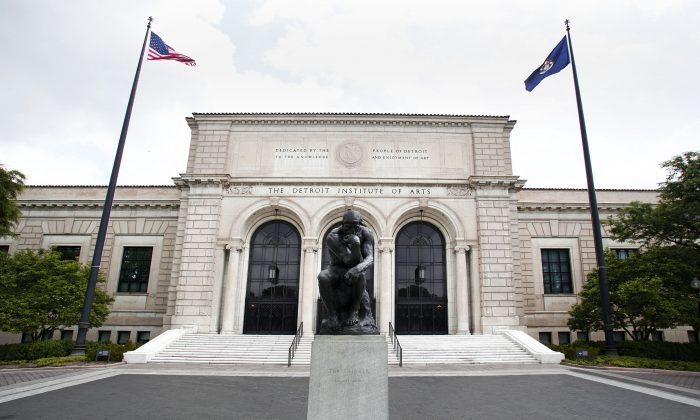A group of philanthropies pledged $330 million to help Detroit emerge from bankruptcy with a greater sense of dignity. The money goes to ease the city’s pension obligations while saving the Detroit Institute of Arts (DIA) from having to sell off its esteemed collection.
In July 2013, Detroit became the largest city ever to file for bankruptcy. With pensions underfunded by as much as $3.5 billion, creditors suggested that the city pay in fine art. In August, Detroit’s Emergency Manager Kevyn Orr hired Christie’s auction house to appraise the wealth of works held by the DIA.
The DIA boasts one of the top six art collections in the United States and many artifacts from the ancient world. According to Christie’s appraisal, just 5 percent of the DIA’s entire holdings are valued between $454 million and $867 million.
City Owned
The selling art for debt proposal, on top of the already controversial bankruptcy, brought public outcry. In October, Defend the DIA led a demonstration of 400 people to warn against the slippery slope of selling city assets.
“No one should believe the claims that sale of the art will help save workers’ pensions,” reads the Defend the DIA website. “After they take the art, the banks will be even more eager to steal municipal workers’ pensions and to slash city services! The right to culture must be defended along with all the rights of the working class.”
According to Mark Stryker of the Detroit Free Press, the DIA has a “long, tangled relationship with city politics and finances” that no other national museum can match. The city obtained ownership of the DIA in 1919, and the museum has been at the mercy of Detroit’s volatile economy and leadership ever since.
“The DIA once again faces an existential crisis, and this time it’s not only the eyes of the art world that are fixated on Detroit but the broader international news media,” wrote Stryker. “The museum has become an easy-to-understand symbol of the depth of Detroit’s woes: Here is a city so broke it might have to sell its Van Gogh (and more) to survive.”
Private Donors
Donors hoping to rescue the DIA—which include the Community Foundation for Southeast Michigan, William Davidson Foundation, Fred A. and Barbara M. Erb Family Foundation, Ford Foundation, Hudson-Webber Foundation, Kresge Foundation, John S. and James L. Knight Foundation, McGregor Fund, and Charles Stewart Mott Foundation—are working with Chief Judge Gerald Rosen and Detroit’s bankruptcy mediation team to craft a plan that will both honor Detroit’s pension commitments and protect the city’s cultural legacy.
“While we approach this matter from different perspectives, we are united in the view that the plan offers an important opportunity to help Detroit find much-needed solutions to its unique challenges,” the group of foundations wrote in a Jan. 13 statement.
The group’s donation falls short of the $500 million the emergency manager said is necessary for Detroit to meet its pension obligations over the next 10 years. As part of the plan, the museum is seeking further contributions.
“Public support is welcome and deeply appreciated at this critical moment in the negotiations,” stated the DIA.







Friends Read Free